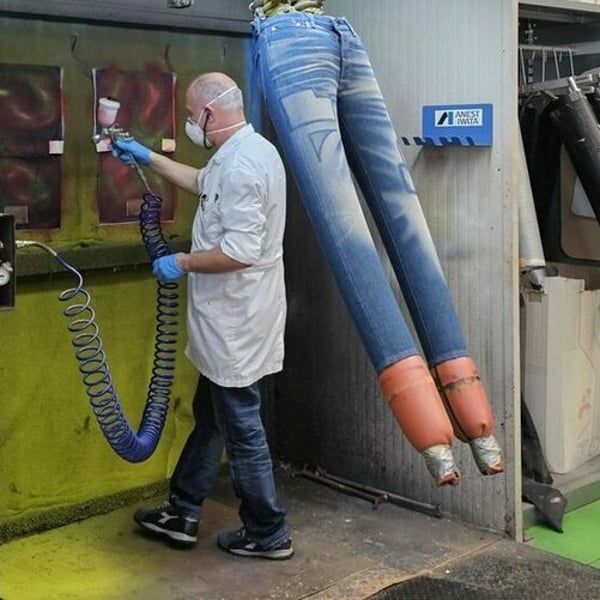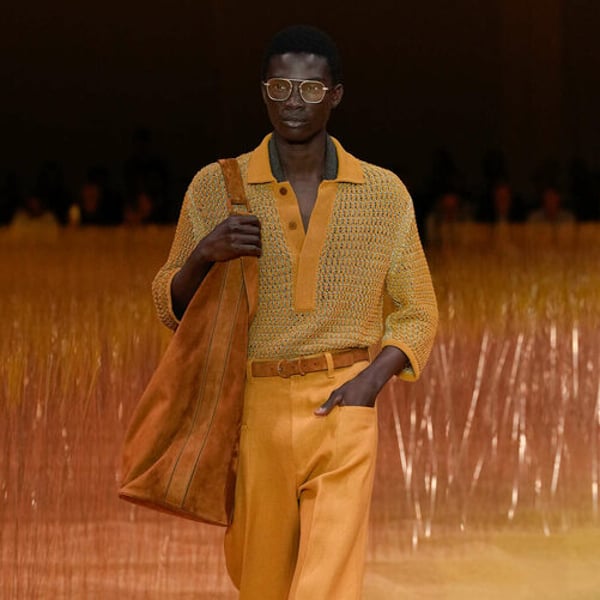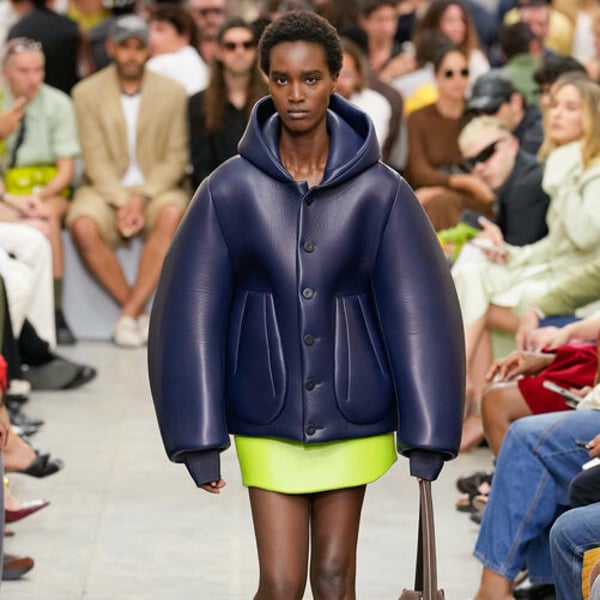Translated by
Nicola Mira
Published
June 7, 2024
The latest innovative solution developed by Nearchimica is the dyeing of garments at room temperature. The goal is to “reduce energy costs and at the same time save a huge amount of water, since our reactive dye for cotton garments allows dyeing in cold water,” said Roberto Camera Magni, director of Nearchimica, an Italian additives producer. chemicals and textile dyes. , in conversation with FashionNetwork.com at the company's headquarters in Legnano, northeast of Milan, on the eve of the Denim Première Vision show, which will take place in Milan on June 5 and 6.
Camera Magni wants to meet the needs of its customers, mostly Asian textile manufacturers, but also several fashion brands. With N-Ice Dyeing, one of the new products that Nearchimica presented at Denim PV, it tries to help its customers offset the sharp increase in energy costs that has occurred in the last two years, as well as to better recycle their wastewater. “There are significant restrictions on water use in India. For this reason, we have developed a salt-free textile dye that facilitates the recycling of water, since salt is an agent that damages [water] filters,” he said.
For 40 years, Nearchimica has focused on the development of chemical products with minimal environmental impact, in a sector that is, however, considered one of the most polluting. “We are just one link in the supply chain. We create new chemicals and chemical engineering solutions using sustainable technology. Like solving a puzzle, R&D helps us add value by eliminating obsolete processes that are no longer viable,” said Sabrina Beretta, head of product development and marketing at Nearchimica.
“Change is constant. It never stops. I believe there is no end in sight to this, given the speed of technological evolution. We must continually adapt by improving operational practices, in an effort to reduce steps in the manufacturing process. Whether by developing more advanced machinery or adopting new technology,” says Camera Magni, who also believes that “zero impact does not exist.”

Nearchimica was founded in 1981 by Alfredo Camera, Roberto's father. In 1993, the company opened two major laboratories in Legnano, where it tests its products by simulating real industrial conditions throughout the fabric manufacturing cycle, from washing to dyeing and finishing. Obsolete, high-performance washing machines sit next to laser printing machines operated by highly qualified designer-technicians. Other machinery is used to spray the dyes, which are then set with laser tools. Small piles of pumice stones are found in containers scattered throughout the laboratory. Before the adoption of laser technology, pumice was used to whiten denim.
“All our prototypes do not contain chlorine or potassium permanganate. We have developed a range of natural dyes and all our products meet the strictest regulations and certification standards. We have 38 employees, and two of them are dedicated full time to data tracking and security certifications. [Apparel] Brands often ask us for specific safety certificates,” says Camera Magni. She noted that some fabric softeners, which were banned by the European Union several years ago, are still found in many T-shirts coming from China, but “there is no way to control this.”
Finishing solutions
A team of finishing specialists works in a slightly secluded room, whose shelves are covered with glass jars and vats containing mysterious substances. The room is equipped with microscopes and in one corner of the wall is a chart showing the chemical characteristics of various types of fabrics. Specialists use complex tools to analyze the composition of fabrics and their colors, check their robustness and print patterns on them using heat, in addition to drying and spraying them.

In addition to dyes, Nearchimica also produces chemical additives used to degrade or soften fabrics, or to enhance some characteristics of textile finishing treatments, such as antiperspirant treatment. It operates with two divisions: the textile division represents 70% of revenues and the clothing division 30%. The company has about 400 clients in 30 countries and generates 60% of its revenue outside Italy, mainly in Asia (Pakistan, India, Bangladesh, Vietnam, etc.) and Africa (Morocco, Tunisia and Egypt, among others). In 2014, Nearchimica opened a subsidiary in Colombia.
Until 2022, Nearchimica's annual revenues ranged between 15 and 16 million euros. In 2023, it fell 9% to 14.9 million euros, but the forecast is to return to usual levels this year. “Through 2022, we were recording revenue increases of up to 300% in some products and between 30% and 40% in others. Then, between 2022 and 2023, a perfect storm struck. The increase in post-Covid consumption generated expectations completely contrary to market reality, while raw material prices began to rise. Added to this is the shipping crisis in the Red Sea and two wars,” Camera Magni stated.
“The problem is that brands continue to ask for very tight delivery times and many of them still produce almost 30% more in volume than they actually sell. The situation will continue to deteriorate, unless planning improves and production volumes decrease,” he concluded.
Copyright © 2024 FashionNetwork.com All rights reserved.












